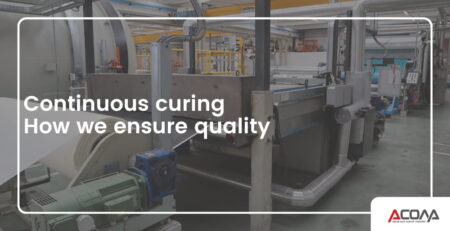COATING PLATES’ APPLICATION
Coating plates: characteristics and applications of our products
Thanks to the recent market launch of AcoCoatSunRrise, the number of products that ACOMA offers rises to 5: AcoCoat, AcoCoatPlus, AcoSuperCoat, AcoCoatUVSpectra and AcoCoatSunRise itself. An offer that guarantees quality, ease of use and sustainability.
ACOMA’s Coating Plates Features
Sustainability is a feature that our coating plates – and indeed all ACOMA products – have in common. ACOMA pays close attention to the environmental impact of its processes and all plates are ISEGA certified, as they are suitable for contact with food packaging, medical and toys stuff.
In addition, all products in the “coat” range are bi-directional and can be cut in both vertical and horizontal formats. This flexibility makes it possible to reduce waste considerably. All of ACOMA‘s coating sheets are easy to peel. There are coating plates suitable for water-based and/or UV varnishes; especially AcoCoatUVSpectra, has been specifically designed for UV varnishes. Finally, AcoCoatSunrise is designed to use a very thin layer of varnish, almost completely eliminating ink build up.
Product Applications
This is the range of coating products.
ACOMA‘s coating plates are suitable for all those applications in which the aim is to achieve glossy, shiny effects and to provide a final, highly aesthetic finish. The yield and quality are very high. Some of the products that varnishing plates are used for are boxes, packaging and book covers that you want to make decorations on.
Coating Plates do not require any special care for storage, with the exception of protection from extreme conditions, such as prolonged exposure to the sun, although they are all packaged with special black UV-protective film. They can also be stored for a long time, as they do not lose their properties over time.
How to proceed with peeling
To peel coating plates, simply use a cutter to cut into the product.
Before proceeding with the stripping, it is good to pay attention to the correct depth of engraving, which however should not be excessive, and the precise intersection of the cutting lines. The risk is to tear the rubber, thus lifting the part of the product that should remain in place and well attached to the PET backing, compromising the use of the sheet itself.











